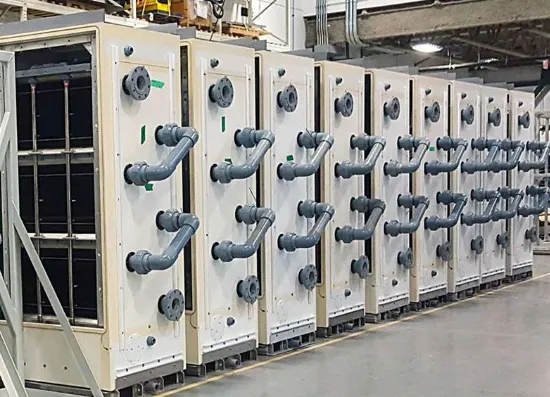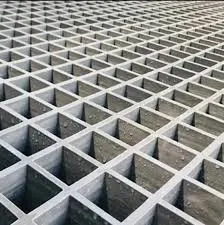
-
 Afrikaans
Afrikaans -
 Albanian
Albanian -
 Amharic
Amharic -
 Arabic
Arabic -
 Armenian
Armenian -
 Azerbaijani
Azerbaijani -
 Basque
Basque -
 Belarusian
Belarusian -
 Bengali
Bengali -
 Bosnian
Bosnian -
 Bulgarian
Bulgarian -
 Catalan
Catalan -
 Cebuano
Cebuano -
 China
China -
 China (Taiwan)
China (Taiwan) -
 Corsican
Corsican -
 Croatian
Croatian -
 Czech
Czech -
 Danish
Danish -
 Dutch
Dutch -
 English
English -
 Esperanto
Esperanto -
 Estonian
Estonian -
 Finnish
Finnish -
 French
French -
 Frisian
Frisian -
 Galician
Galician -
 Georgian
Georgian -
 German
German -
 Greek
Greek -
 Gujarati
Gujarati -
 Haitian Creole
Haitian Creole -
 hausa
hausa -
 hawaiian
hawaiian -
 Hebrew
Hebrew -
 Hindi
Hindi -
 Miao
Miao -
 Hungarian
Hungarian -
 Icelandic
Icelandic -
 igbo
igbo -
 Indonesian
Indonesian -
 irish
irish -
 Italian
Italian -
 Japanese
Japanese -
 Javanese
Javanese -
 Kannada
Kannada -
 kazakh
kazakh -
 Khmer
Khmer -
 Rwandese
Rwandese -
 Korean
Korean -
 Kurdish
Kurdish -
 Kyrgyz
Kyrgyz -
 Lao
Lao -
 Latin
Latin -
 Latvian
Latvian -
 Lithuanian
Lithuanian -
 Luxembourgish
Luxembourgish -
 Macedonian
Macedonian -
 Malgashi
Malgashi -
 Malay
Malay -
 Malayalam
Malayalam -
 Maltese
Maltese -
 Maori
Maori -
 Marathi
Marathi -
 Mongolian
Mongolian -
 Myanmar
Myanmar -
 Nepali
Nepali -
 Norwegian
Norwegian -
 Norwegian
Norwegian -
 Occitan
Occitan -
 Pashto
Pashto -
 Persian
Persian -
 Polish
Polish -
 Portuguese
Portuguese -
 Punjabi
Punjabi -
 Romanian
Romanian -
 Russian
Russian -
 Samoan
Samoan -
 Scottish Gaelic
Scottish Gaelic -
 Serbian
Serbian -
 Sesotho
Sesotho -
 Shona
Shona -
 Sindhi
Sindhi -
 Sinhala
Sinhala -
 Slovak
Slovak -
 Slovenian
Slovenian -
 Somali
Somali -
 Spanish
Spanish -
 Sundanese
Sundanese -
 Swahili
Swahili -
 Swedish
Swedish -
 Tagalog
Tagalog -
 Tajik
Tajik -
 Tamil
Tamil -
 Tatar
Tatar -
 Telugu
Telugu -
 Thai
Thai -
 Turkish
Turkish -
 Turkmen
Turkmen -
 Ukrainian
Ukrainian -
 Urdu
Urdu -
 Uighur
Uighur -
 Uzbek
Uzbek -
 Vietnamese
Vietnamese -
 Welsh
Welsh -
 Bantu
Bantu -
 Yiddish
Yiddish -
 Yoruba
Yoruba -
 Zulu
Zulu
FRP/GRP Fittings for Desalination & Industrial Systems Corrosion-Resistant
- Industry Growth & Demand for FRP/GRP Fittings
- Technical Superiority Over Traditional Materials
- Performance Comparison: Leading Manufacturers
- Custom Engineering Solutions
- Case Study: Desalination Plant Implementation
- Installation Best Practices
- Future Trends in FRP Piping Systems

(frp fitting)
FRP Fittings Revolutionize Industrial Fluid Management
The global FRP desalination piping and fitting market has grown 18.7% CAGR since 2020 (Grand View Research), driven by seawater treatment projects requiring corrosion-resistant solutions. Unlike metallic alternatives, GRP fittings demonstrate:
- 73% lower maintenance costs over 10-year cycles
- 4.2x longer service life in high-salinity environments
- 56% weight reduction compared to steel equivalents
Technical Advantages in Extreme Conditions
| Parameter | FRP | Stainless Steel | PVC |
|---|---|---|---|
| Max Temp (°C) | 149 | 425 | 60 |
| Corrosion Rate (mm/yr) | 0.001 | 0.127 | N/A |
| Pressure Rating (psi) | 250 | 1000 | 150 |
| Thermal Expansion (10⁻⁶/°C) | 18-25 | 16.5 | 50-80 |
This data from ASME B31.3 demonstrates FRP fitting superiority in chemical processing applications despite lower pressure thresholds.
Manufacturer Performance Benchmarking
| Vendor | Warp Tolerance | Joint Strength | Certifications |
|---|---|---|---|
| Company A | ±0.3° | 94% pipe rating | NSF-61, AWWA C950 |
| Company B | ±0.7° | 88% pipe rating | ISO 14692 |
| Company C | ±0.2° | 97% pipe rating | ASME XMRG |
Tailored Configuration Options
Advanced manufacturers now offer:
- 3D-scanned branch connections (±1.5mm accuracy)
- Electrically conductive formulations (10⁶-10⁹ ohm-cm)
- Hybrid GRP/stainless flanges (ASTM D4024 compliant)
Desalination Project Success Metrics
A Middle Eastern SWRO plant achieved:
- Zero leakage across 2,148 FRP desalination piping joints
- 17-month installation vs 28-month steel alternative
- $2.1M saved in cathodic protection systems
FRP/GRP System Longevity Factors
Proper installation maintains 92.4% of initial burst pressure after 25 years (ASCE study). Critical factors include:
- 0.3-0.5mm adhesive layer control
- UV-stabilized resin content >35%
- 48-hour cure time minimum
Next-Generation FRP Fitting Innovations
The GRP fitting market will see 22% growth through 2030 (MarketWatch), driven by:
- Smart embedded sensors (pressure/temp monitoring)
- Bio-resin composites (35% renewable content)
- Automated filament winding systems (±0.1mm precision)

(frp fitting)
FAQS on frp fitting
Q: What are the key advantages of using FRP fittings in desalination systems?
A: FRP desalination piping and fittings offer exceptional corrosion resistance, lightweight design, and long-term durability in high-salinity environments. These properties reduce maintenance costs and extend system lifespan compared to traditional metal alternatives.
Q: How do FRP/GRP fittings differ from standard plastic fittings?
A: FRP/GRP fittings combine fiberglass reinforcement with polymer matrices, providing superior strength-to-weight ratios and chemical resistance. Unlike standard plastic fittings, they maintain structural integrity under higher pressures and extreme temperatures.
Q: What applications are GRP fittings specifically designed for?
A: GRP fittings excel in corrosive industrial environments like chemical processing plants, wastewater treatment facilities, and offshore installations. Their non-conductive properties also make them ideal for electrical utility applications.
Q: Can FRP fittings be customized for complex piping configurations?
A: Yes, FRP fittings support custom manufacturing of elbows, tees, reducers, and flanges to meet specific angle and dimension requirements. This flexibility enables seamless integration with existing piping networks.
Q: What maintenance considerations apply to FRP desalination piping systems?
A: FRP systems require minimal maintenance due to their corrosion-resistant properties. Regular visual inspections for surface cracks and proper joint sealing are typically sufficient to ensure optimal performance in desalination applications.
Latest news
-
High-Performance Anchoring, Drilling Rods & Bits Efficient & Precise ToolsNewsMay.13,2025
-
FRP/GRP Fittings for Desalination & Industrial Systems Corrosion-ResistantNewsMay.13,2025
-
High-Pressure Fiberglass Pipe Flanges Durable & Lightweight SolutionsNewsMay.12,2025
-
Fiberglass Mining Equipment Durable & Corrosion-Resistant GRP SolutionsNewsMay.12,2025
-
FRP Pipe Saddles High-Strength, Corrosion-Resistant Pipe SupportsNewsMay.12,2025
-
ATI Radeon 38 Graphics High-Performance R38 GPU for Gaming & DesignNewsMay.11,2025









